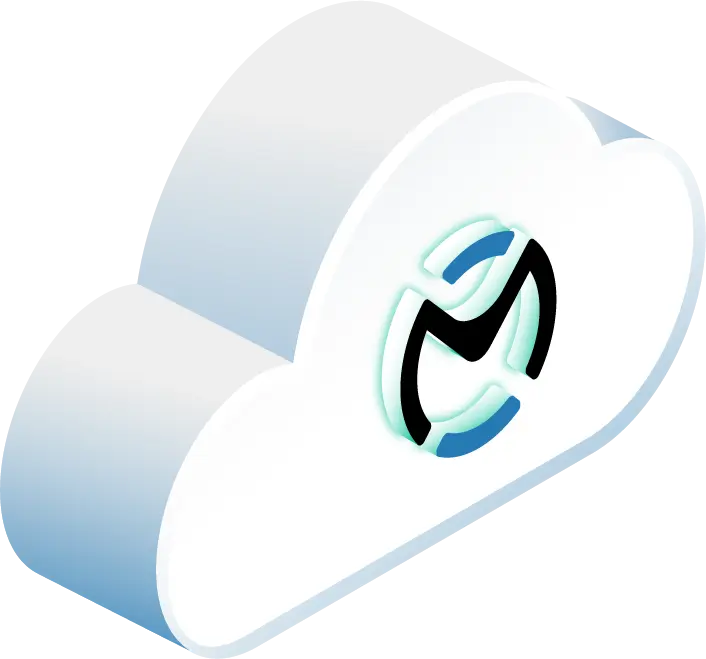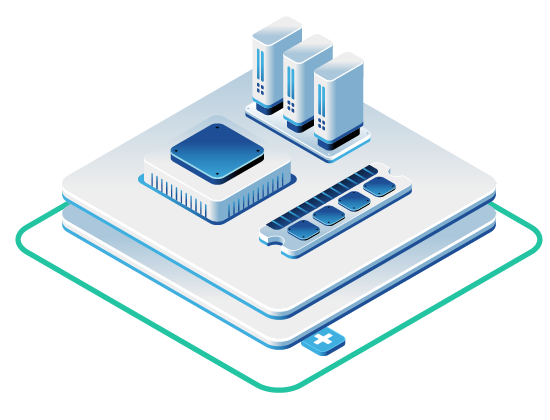In this article
- Trend 1: AI and Automation Make Compliance Easier
- Trend 2: Data Privacy and Security Get More Serious
- Trend 3: DevSecOps – Making Security a Team Effort
- Trend 4: Responding to Threats Faster and Smarter
- How OpenMetal Helps with Compliance
- Wrapping Up: What SOC 2 Looks Like Moving Forward
- Get Started Today on a Hosted Private Cloud
SOC 2 compliance is changing quickly. In 2025, keeping your private cloud secure means moving beyond old checklists; it’s about proactively protecting your systems and taking advantage of new tools and techniques available.
What’s Happening with SOC 2:
- Smarter Monitoring: Expect security that watches things in real-time, with AI helping to spot trouble early.
- Stronger Security (Zero Trust): It’s about constantly checking who’s trying to access what – no free passes!
- Better Data Protection: Think tougher encryption and smarter ways to prevent data leaks, like noticing unusual activity. Solutions like EDR in cybersecurity can help with this through monitoring endpoint activity in real time, providing greater visibility and control.
- Security Built-In (DevSecOps): Security becomes part of how software is made, not just something added in at the end.
- Faster Threat Response: This means having multiple ways to detect threats, strong defenses against ransomware, and keeping a close eye on your tech partners.
Basically, SOC 2 in 2025 means you need to be actively looking for problems, constantly monitoring your private cloud, and using smart tools to stay secure. Companies like OpenMetal are offering private cloud options designed to help tackle these new demands.
Trend 1: AI and Automation Make Compliance Easier
Modern and better tools are going beyond just tracking things. They’re designed to watch your security and data handling all the time, helping you stay compliant more smoothly. AI is becoming a key way to find compliance risks early.
AI is your early warning system. It can look at how your systems are behaving and spot anything unusual that might be a problem. This fits right in with the 2025 need for real-time monitoring and catching threats before they escalate.
Combining AI advancements with capable and flexible infrastructure like we provide at OpenMetal is really changing how compliance can be managed. Arys Andreou from MyMiniFactory puts it well:
“Having our own private cloud has allowed us to configure our infrastructure to our particular needs. Given that we are leveraging OpenStack’s tools and APIs we have managed to achieve this in an unattended manner through code. One such example is networking configuration and resource isolation. We can completely isolate and therefore provide a higher level of protection for our production servers.”
Trend 2: Data Privacy and Security Get More Serious
SOC 2 rules are getting stricter, pushing private cloud providers and their users to really focus on better data privacy and security.
In 2025, strong encryption and zero-trust security for private clouds are becoming must-haves. Think using strong methods like AES-256 to protect stored data and TLS 1.3 for data that’s being moved around. Consider using systems that control who can access what and track it in real time. These steps help prevent data from being accessed by the wrong people.
Preventing data loss is a big part of SOC 2. Automation is becoming a key tool here. This includes:
- Tools That Understand Content: These tools can identify sensitive information based on what it is.
- Watching for Strange Behavior: They look for unusual activity from users or systems that might indicate a data leak.
- Automatic Responses: If something suspicious happens, these systems can automatically take action to stop it.
These smart methods help organizations meet the tough rules for protecting sensitive information.
In a world where you might use multiple clouds, knowing exactly where your data is located is also important. The 2025 SOC 2 rules highlight the need to know the specific geographic location of your data, keep good records of where it’s accessed, and have backups in different regions. Tools that send automatic alerts, create virtual boundaries (geofencing), and control access by region help you allow global access while still following local rules. This means you can stay compliant without making it hard to get to your data.
Trend 3: DevSecOps – Making Security a Team Effort
Because SOC 2 requires constant monitoring and being ready for risks, DevSecOps – where security is part of the software development process from the start – is becoming the standard way to secure private cloud environments. It’s about building security in, not adding it later.
Thinking about security right from the beginning fits perfectly with what SOC 2 wants. Tools that check your infrastructure code (IaC) can find problems before you even set things up. Key early steps include:
- Thinking Like an Attacker (Threat Modeling): Trying to figure out how someone might attack your system before you build it.
- Adding Security Tasks to Development: Making security a regular part of the development work.
- Automatically Checking Security While Coding: Running security tests as developers write code.
These steps create a more secure development process from the ground up.
Modern software development processes now include automatic security checks at each stage to help maintain SOC 2 compliance. These checks make sure security standards are followed consistently. Here’s how security gets built in:
| Stage of Development | Security Check | What It Does |
|---|---|---|
| Building Software | Checking for risky components | Finds known weaknesses in software you’re using from other places |
| Testing Software | Looking for weaknesses | Finds security problems in your own code and how it’s running |
| Setting Up Systems | Checking configurations | Makes sure your systems are set up securely |
| Running Systems | Ongoing security checks | Continuously watches for threats and makes sure you’re still compliant |
This approach also lets you write security rules as code, making security a natural part of how software gets made.
Tools that let you define security rules in code help you follow SOC 2 requirements efficiently. Common ways to do this include:
- Using tools like Open Policy Agent: Automatically enforcing your security rules.
- Checking Compliance with Code: Making sure everything follows your security rules, which are written in a code format.
- Keeping Track of Security Rules Like Software: Managing your security rules in the same system where you manage your code, so you have a clear history of changes.
Trend 4: Responding to Threats Faster and Smarter
As we get better at watching our systems and building secure software, we also need to get better at responding to threats. SOC 2 now emphasizes finding threats quickly and automatically stopping them to protect private cloud environments.
Finding threats has become a key part of SOC 2 compliance in 2025. Organizations need to use a mix of traditional security methods and smart, AI-powered monitoring. Here are the main layers:
| What You’re Watching | What You’re Looking For | Why It Helps with Compliance |
|---|---|---|
| Network Traffic | Suspicious communication patterns | Helps ensure ongoing security of data in transit |
| Individual Computers/Devices | Unusual activity that could indicate a compromise | Protects your endpoints and the data they handle |
| How Systems Talk to Each Other | Unauthorized or unusual communication between applications | Secures your APIs and prevents unauthorized access to functionalities |
| Your Cloud Resources | Unauthorized changes or suspicious resource usage | Ensures the security and integrity of your cloud setup |
These systems need to keep detailed records and send alerts immediately when they find something suspicious, helping you stay compliant and react quickly to problems.
SOC 2 also requires you to use smart tools to analyze threat information so you can manage risks effectively. Companies are using analytics platforms to process security data, find patterns, and predict potential problems. Key features of these tools include:
- Spotting Odd Behavior: Identifying activity that’s different from what’s normal for users and systems.
- Predicting Attacks: Using AI to guess when and where an attack might happen based on past information.
- Connecting Threats to Compliance Rules: Automatically showing how threat data relates to your SOC 2 requirements.
These abilities make finding and understanding threats much more effective and help you stay ahead of new dangers.
New Threats, New Rules
SOC 2 has added updates to specifically address three big threats:
- Ransomware Protection: You now need strong backup systems that are separate from your main network and regular tests to make sure you can recover quickly after an attack.
- Supply Chain Security: New rules mean you need to constantly monitor the security of any outside services or connections you use. You need a detailed list of all these external partners and how secure they are.
- Zero Trust in Action: SOC 2 now clearly includes zero trust principles, meaning you need to:
- Have constant checks to verify who and what is accessing your systems.
- Give people only the bare minimum access they need to do their jobs.
- Divide your cloud resources into small, isolated sections.
- Regularly review and update access permissions.
These updates are all about dealing with today’s threats while sticking to the core ideas of security, availability, and confidentiality in private cloud setups.
How OpenMetal Helps with Compliance
OpenMetal offers private cloud solutions designed to meet these modern compliance rules, giving you a secure and efficient way to manage your cloud.
OpenMetal follows the 2025 SOC 2 rules by using dedicated hardware and separate environments, ensuring your data is well-protected and you have a lot of control. Key compliance features include:
| Feature | What It Does for You | How It Works |
|---|---|---|
| Dedicated Hardware | Your resources are physically separate and more secure | Single-tenant infrastructure |
| Customizable Security | You can set up security the way you need it | Configurable security policies in the platform |
| Monitoring Your Resources | You can see how you’re doing with compliance in real time | Built-in OpenStack monitoring tools |
| Controlling Who Accesses | You can manage exactly who can do what in your systems | Role-based access control system |
Security Architecture: By using OpenStack and Ceph, OpenMetal provides a private setup that focuses on protecting data and controlling access, giving you a strong base for compliance. Because it’s open source, you have more visibility and can customize security as needed.
Pricing and Scaling: OpenMetal offers predictable pricing for data transfer and can be much more cost-effective than regular public clouds. The platform is also designed to grow with you quickly without making your security weaker.
The mix of cost savings, speed, and security really helps with meeting the compliance needs of 2025 and beyond.
Wrapping Up: What SOC 2 Looks Like Moving Forward
SOC 2 compliance is all about being proactive, using automation to help you monitor things constantly, protecting your data well, and making security a key part of how you build and run your systems. More and more, companies are using AI to help them stay ahead, and stronger data protection methods are becoming essential.
Making security part of the development process (DevSecOps) is no longer optional. By building security in from the start, companies can better defend against new threats and stay compliant.
| What’s Becoming Standard | What It Means for You |
|---|---|
| AI-driven monitoring | Real-time checks and early warnings for compliance issues |
| Stronger data encryption | Better security and control over your sensitive data |
| Security in development | Fewer security problems in your software |
| Faster threat detection | Ability to stop attacks more quickly and effectively |
These trends show that organizations need to have compliance strategies that both work now and can adapt to future changes.
Getting Ready for the Future of Cloud Compliance
As these changes become more common, businesses need to find ways to handle compliance that are both scalable and affordable. Private cloud options that offer strong security, good value, and reliable performance, like OpenMetal, will be key for navigating the future of cloud compliance. Things to consider for the future include:
- How Easily Your Systems Can Adapt: Choosing systems that can quickly adjust to new compliance rules without slowing you down.
- Managing Costs: Looking for clear and predictable pricing for compliance-related expenses.
- Keeping Things Running Smoothly: Making sure your compliance measures don’t hurt your system’s speed or reliability.
By focusing on these areas, you can build a private cloud environment that’s secure, compliant, and ready for what’s next.
Read More on the OpenMetal Blog


































